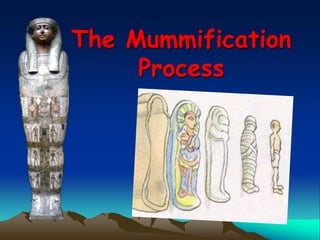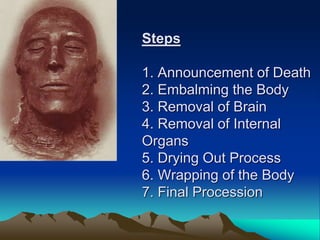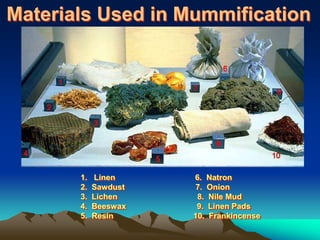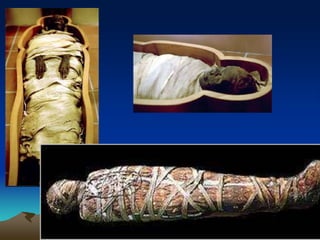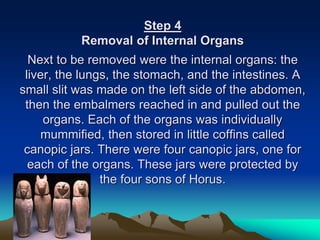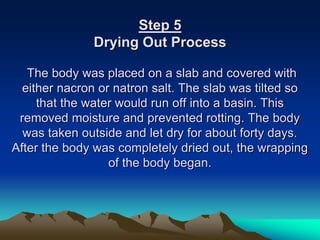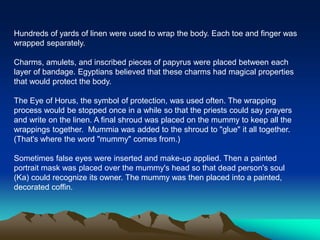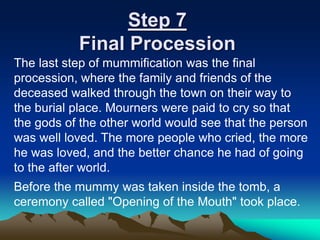The ancient Egyptians first created natural mummies by leaving bodies in the hot, dry desert sand, which dehydrated and preserved them. Later, they developed a more elaborate seven-step process involving removing organs, drying the body with natron, wrapping it in linen with amulets and charms, a ceremony to allow use of senses in the afterlife, and burial along with possessions. Egyptians believed the heart was weighed after death - if it was lighter than a feather, the soul gained immortality, but if heavier it was devoured as punishment. Some believe the deaths after Tut's tomb was opened show the power of his supposed curse.
